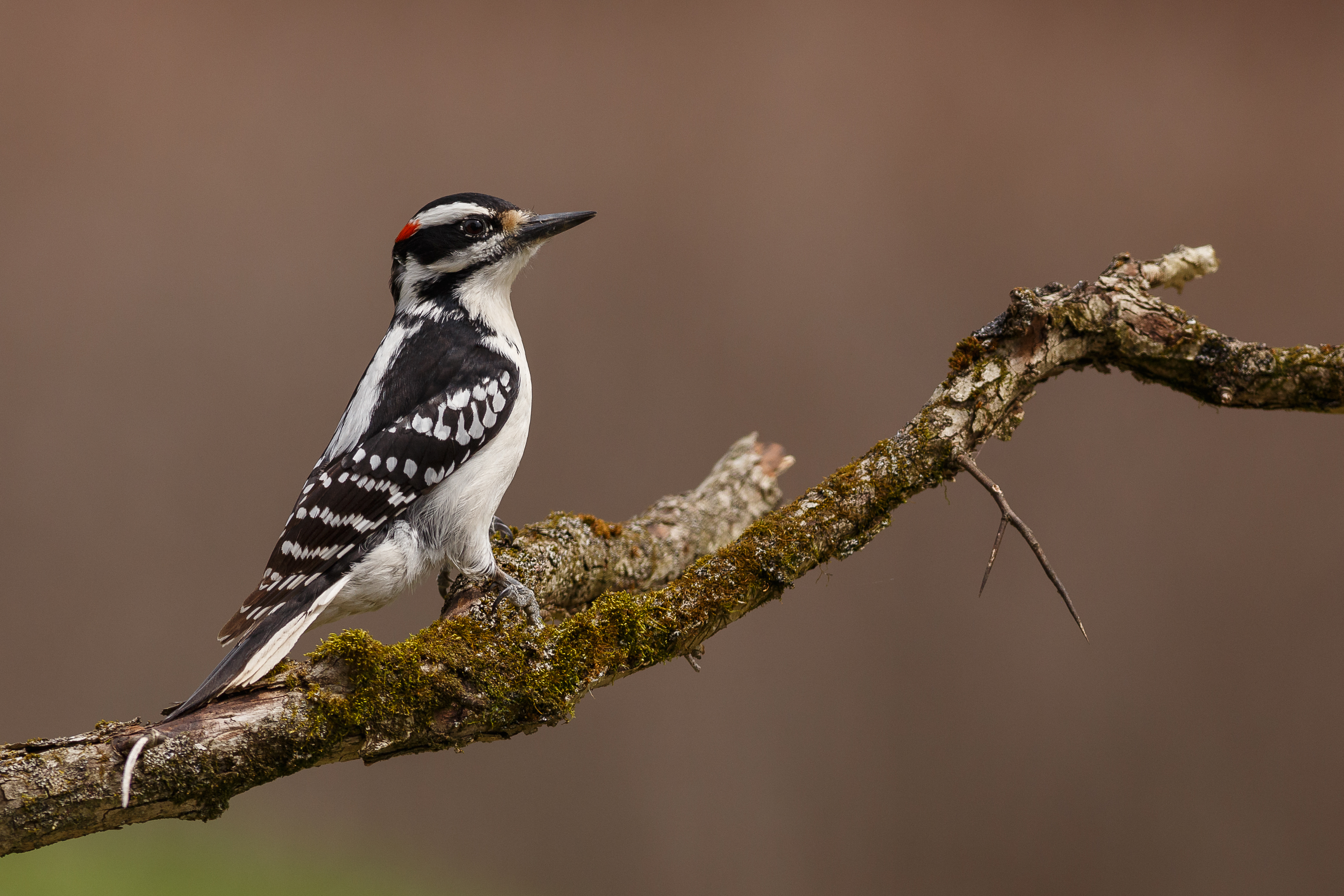February 19, 2018

By Gavin Leighton
Although most birds of North America are incredibly diverse, some species look very, very similar. One pair of species that look surprisingly similar are Hairy and Downy Woodpeckers. When two species look similar to one another, it’s not a stretch to assume they have a close evolutionary relationship. But in the case of Hairy and Downy Woodpeckers—two of North America’s most famous tricky ID species—it turns out they aren’t all that closely related. Hairy Woodpeckers are more closely related to the very different-looking White-headed and Red-cockaded Woodpeckers, while Downy’s closest relatives are Ladder-backed and Nuttall’s. This suggests that Downy and Hairy Woodpeckers look like one another for reasons other than common ancestry. And as a scientist, I wanted to figure out why.
Testing Hypotheses with Feeder Watch Data
Scientists have speculated that Downy Woodpeckers might benefit from looking like Hairy Woodpeckers. Why? Because if a Hairy Woodpecker misidentifies a Downy as a Hairy, maybe it would be less likely to chase the Downy away from food or other valuable resources (let’s call this the “Hairy Woodpecker Trickery” hypothesis).
This idea had been proposed but never tested. So, using behavioral interaction data collected by FeederWatch participants, a research team (myself, Alex Lees, and Eliot Miller) at the Cornell Lab of Ornithology tested whether Downy Woodpeckers suffered less aggression from Hairy Woodpeckers than would be expected if their encounters were random. Contrary to the expectations of the “Hairy Woodpecker Trickery” hypothesis, we found that Hairy Woodpeckers chased Downy Woodpeckers away from feeders at least as much as you would expect based on random encounters.
This led us to test a different idea: maybe the similarity fools species other than Hairy Woodpeckers. Recent research based on FeederWatch data determined that Downy Woodpeckers are especially dominant for their size—that is, they can win at scuffles involving some species much larger than themselves (like Northern Cardinals, for example, which weigh almost twice as much as a Downy). Read more about Downy dominance here.
How can they pull this off? Downy Woodpeckers may use their resemblance to Hairy Woodpeckers to fool other species into thinking they are the bigger Hairy Woodpecker (let’s call this the Innocent Bystander Trickery hypothesis). Think of it this way: If you were a cardinal and thought you saw a Hairy Woodpecker flying toward you, you might be very quick to get out of the way. The pattern was subtle, so more observations are needed to confirm the idea, but it is thanks to FeederWatchers that we have such a good start.
What’s Next?
Now that we have some evidence that Downy Woodpeckers may be fooling species other than Hairy Woodpeckers, we are considering ways to test the finding in the field. One option is to look at Hairy and Downy Woodpecker interactions at feeders in the few places where these species do not overlap in distribution, such as Florida and parts of the Southwest. If you want to contribute to this dataset in any location, consider trying FeederWatch. Sign up here.
Which species is in the photo at the top of this article?
In case you were wondering, that is a Hairy Woodpecker. It’s not always easy to tell when they aren’t side-by-side! One clue is in the tail feathers – notice how the edges are white without any black markings. Thank you to Mike Bons for sharing this gorgeous photo with Project FeederWatch.
Research paper: Leighton, GM, AC Lees, ET Miller. 2018. The hairy-downy game revisited: an empirical test of the interspecific social dominance mimicry hypothesis. Animal Behavior 137:141-148.


